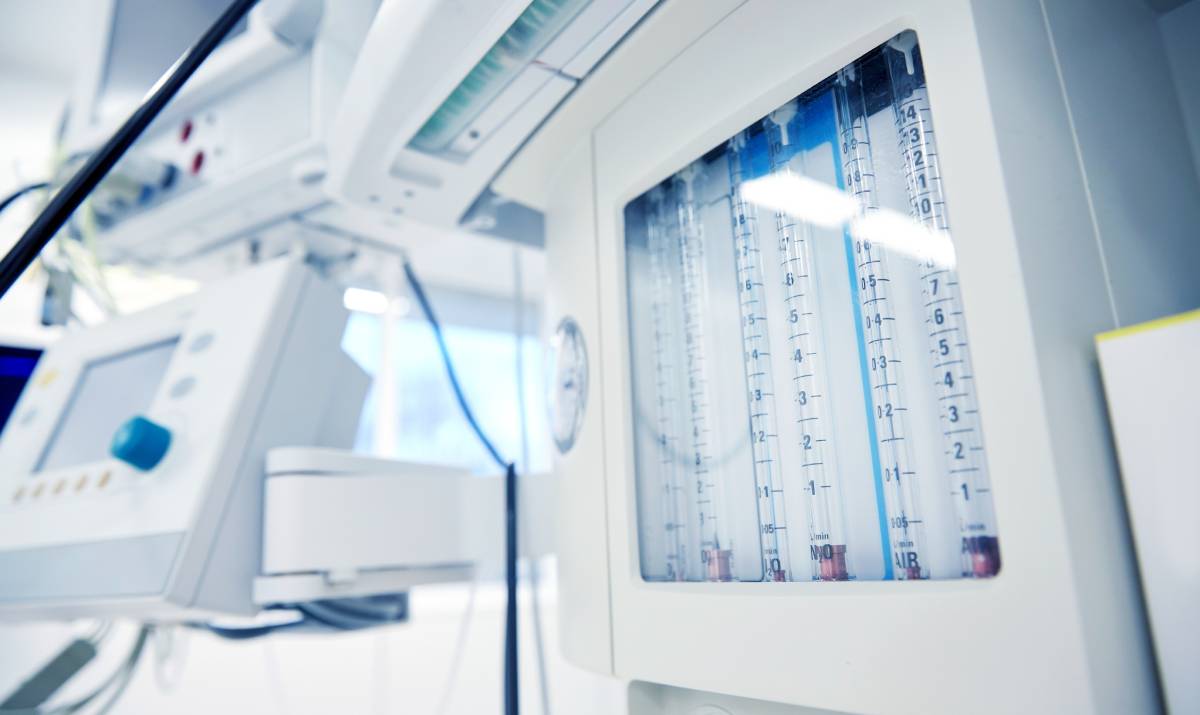Inhalational sedation refers to the constant supply of a sedative agent in gas form. The technique can also be referred to as inhalational conscious sedation, happy gas or laughing gas. The gas administered is nitrous oxide, although other methods of inhalation sedation do exist, such as the use of fixed concentrations of nitrous oxide and oxygen, but these tend to be less commonly used.
Inhalational sedation has established itself clinically as a viable alternative to general anesthesia and intravenous sedation in certain clinical contexts. One research study sought to assess the effectiveness and the tolerability of the nitrous oxide sedation for dental treatment on a large pediatric sample consisting of pre-cooperative, fearful, and disabled patients. Data demonstrated that inhalational conscious sedation represented an effective and safe method to ensure cooperation, even in very young patients, and that it could reduce the number of pediatric patients referred to hospitals for general anesthesia 1.
Inhalational sedation presents with a number of advantages 3. First, it is a non‐invasive technique with no requirement for venipuncture/cannulation. Second, the low solubility of nitrous oxide ensures a rapid onset and recovery. Third, the level of sedation via the flow of gas can be easily controlled and adjusted according to the anxiety levels of the patient and the needs of the procedure being carried out 2. Finally, it tends to only result in a minimal level of sedation however, so a patient will become sleepy and sluggish but not lose consciousness. Following the procedure, a patient typically recovers from sedation quickly.
Inhalational sedation also comes with a number of disadvantages, however 3. First, the drug has to be administered continuously via a mask, which may be bothersome to a patient. In addition, the level of sedation requires is highly dependent on the psychological reassurance provided to a patient in parallel. The technique also requires a certain level of compliance in terms of breathing through the nose; it is not suitable for very young children and patients with severe behavioral problems. If it is being used for dental surgery or other procedures near the face, the placement of the mask may also be cumbersome.
While inhalational sedation is most commonly used in the context of dental procedures, clear indications and contraindications exist across other clinical contexts. It is indicated for use to manage dental anxiety, needle phobia, gag reflexes, or when treating medically compromised patients.
In contrast, it is contraindicated in the case of patients with upper respiratory tract infections, large tonsils or adenoids, serious respiratory disease, or mouth breathing. It is also not recommended for individuals with moderate to severe learning difficulties, patients with severe psychiatric disorders, pregnant women, patients taking Methotrexate, or patients who have had vitreoretinal surgery within the last three months.
References
1. Galeotti, A. et al. Inhalation Conscious Sedation with Nitrous Oxide and Oxygen as Alternative to General Anesthesia in Precooperative, Fearful, and Disabled Pediatric Dental Patients: A Large Survey on 688 Working Sessions. Biomed Res. Int. (2016). doi:10.1155/2016/7289310
2. The Difference Between Inhalation Sedation And Oral Sedation. Available at: https://www.thepointdental.com.au/the-difference-between-inhalation-sedation-and-oral-sedation/. (Accessed: 14th July 2023)
3. Principles and Practice of Inhalation Sedation | Pocket Dentistry. Available at: https://pocketdentistry.com/principles-and-practice-of-inhalation-sedation/. (Accessed: 14th July 2023)
